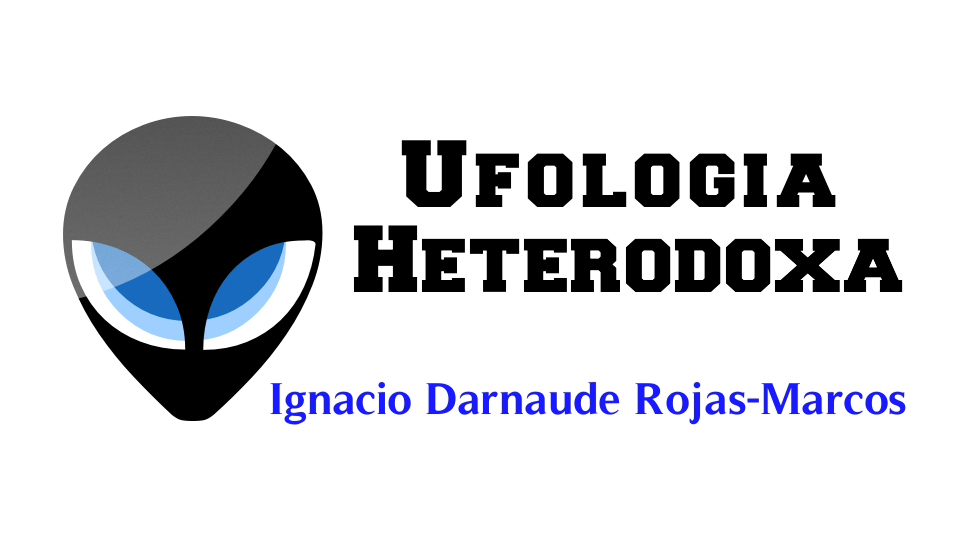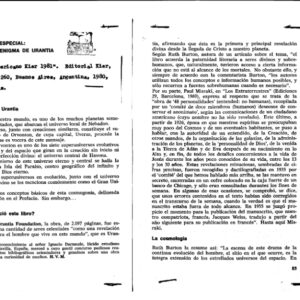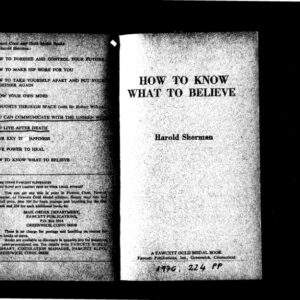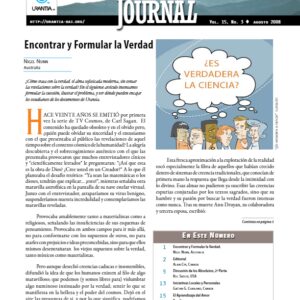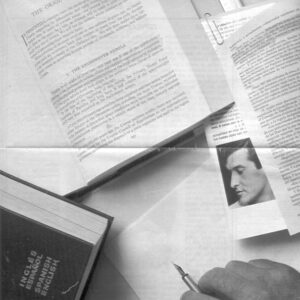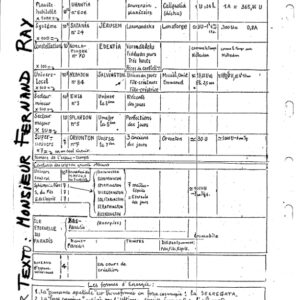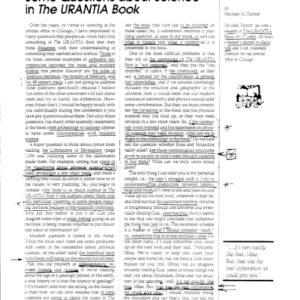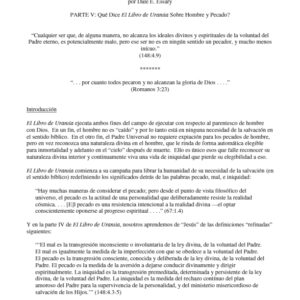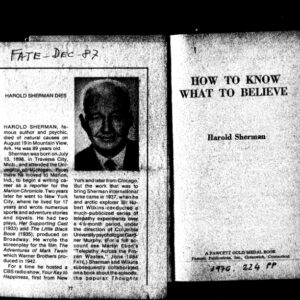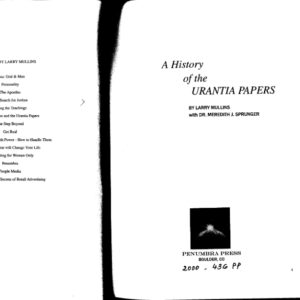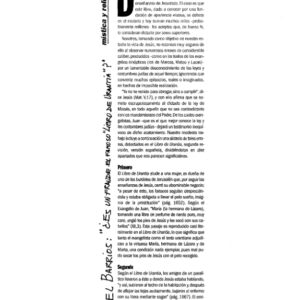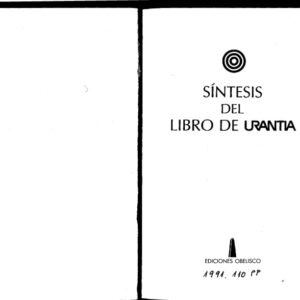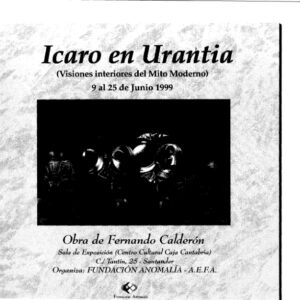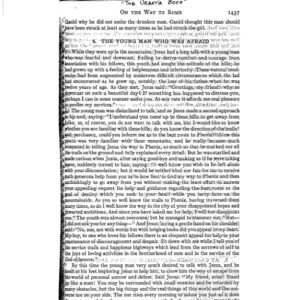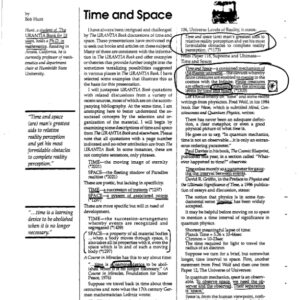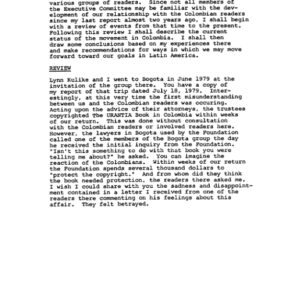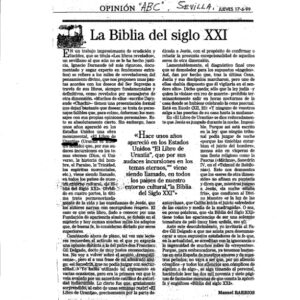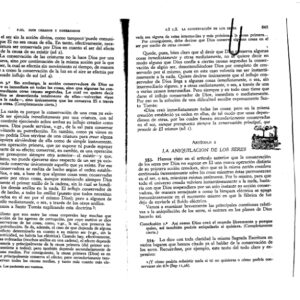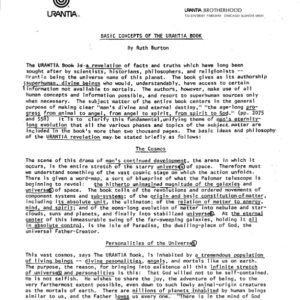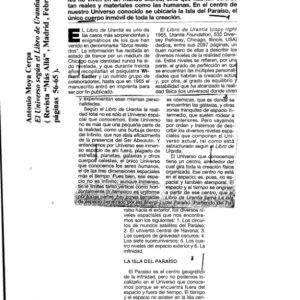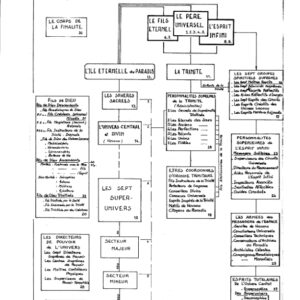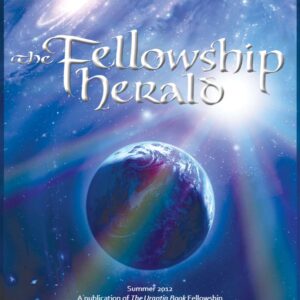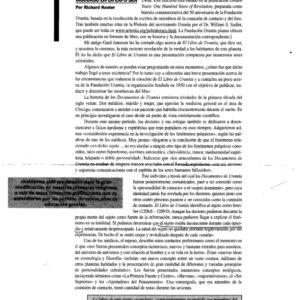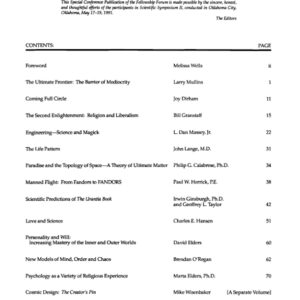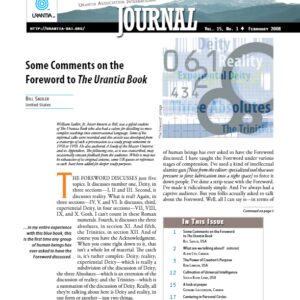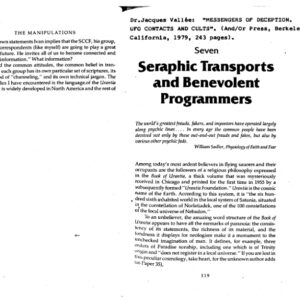Urantia book y Paradise and the Topology of Space
- Descripción
Descripción
Urantia book y Paradise and the Topology of Space
Paradise and the Topology of Space:
A Theory of Ultimate Matter
To start off today, some of you may remember the last Scientific Symposium in Nashville when I concluded that there is no way for human resurrection to occur on Jerusem «on the third day after natural death» because the guardian seraphim, who carries the human soul, cannot travel there in less than twenty years. The Urantia Book insists that there is no way for a seraphim to traverse space any faster than three times the speed of light (*260). Since the nearest star is 4.3 light years away and Jerusem must be many stars away, the angel can’t get there in days at her speed. The distance from earth to Jerusem can’t be nine light days; it is more like sixty light years away.
Now at the first Scientific Symposium in Nashville I went so far as to suggest that some nameless Melchizedek might have been called on the carpet for using the expression «on the third day after natural death,» which we would take literally. Well, today I am going to recant my Urantia Book apostasy; I’ve thought of a way for the guardian angel to get to Jerusem in less than three days: The angel simply doesn’t travel there under her own power! She must be translated to Jerusem by some unrevealed universe or Paradise technique. A careful reading of The Urantia Book will reveal that in every case where this trip by the seraphim from Urantia to Jerusem is described, the author never says that the angel gets there by normal seraphic travel or transport. Instead, some vague expression like «proceeds to Jerusem» is used to denote the mode of transportation of the angel. I hope this explanation resolves the anomaly and points to an unrevealed seraphic phenomenon associated with human death. On, then, to the main part of my presentation today.
So now let us reflect on the cosmos–the Totality of Reality. Each one of us, no matter what our status in life, has been afforded a personal view of the cosmos, not only introspectively in the attempted contemplation of the indwelling spirit of the Universal Father, but also externally as we each gaze up at the stars in the night sky. This continuous view of the cosmos stretches trillions of miles in all directions, and spans millions of years into the past, and allows projections millions of years into the future. That the universe should afford each one of us a personal view of the whole cosmos, no matter how supposedly small our doings here on earth, demonstrates how God is concerned with each of us as individuals–not just in the aggregate.
In the final analysis, INFINITY IS, and that is all there is to say about it. But, of course, we’re going to try to say something else about it, anyway! But before we do, let us pause in awe for a moment to experience in our personality consciousness, the infinite ONENESS that we call God, perhaps to feel the loving smile of the one that we may call Father.
Total Reality is Unqualified Infinity. Total reality embraces unbounded infinity as well as the Infinitude, and also these two unified as the whole, the Infinite One. Before attempts at understanding, the human mind must divide Reality Totality into an infinitude (as contrasted from a single unity), and an unlimited infinity (as contrasted from the bounded finite), and then somehow synthesize these two conceptions into a unified whole.
In the first absolute transaction, the Infinite One becomes the personal Father of the Eternal Mother-Son (the original spirit person) and also the eternal source of Paradise (the original non-spirit, nonpersonal manifestation). All conjoint action by the Father and the Mother-Son is consummated by the Mind-God, the Conjoint Actor, the Third Person of the Infinite Trinity. From Paradise emerges space, which, like the concept of the master universe, is a transcendental reality existing somehow between the infinite and the finite. The fifth absolute is the Unqualified Absolute, which pervades all space but is not limited by space. The Deity Absolute and Universal Absolute complete the seven absolutes of infinity. These seven absolutes are functionally unified in the fourteen triunities, each a functional association of the Father with two of the other six absolutes.
It is suggested that we may helpfully conceive the total cosmos as an almost limitless ellipse with one absolute focus located in Paradise. What does The Urantia Book say about these matters?
On Paradise:
-
- A flat ellipsoid, having upper, nether, and peripheral regions
- The most gigantic organized structure in the whole Cosmos
- The dwelling place of the existential Trinity of three divine persons and (probably) the focal center of all three of the nonpersonal Absolutes (*15)
- The geographic center of infinity (*126)
- Has no time or space (except by volition) but has absolute surfaces and areas and absolutely significant distances and directions–north, south, east, west, up and down
- Universally present as the physical grasp of Paradise gravity, an instantaneous attraction (*125,482)
- Is the nucleus of each ultimaton (the smallest material particle)
- Located at the center of all things
- No position in space but located at the focus of space (*1156)
- Peripheral Paradise touches the relatively motionless midspace zones of space existing between the moving zones of space (*124).
On the Unqualified Absolute:
-
- Pervades all space but is not limited to space presence
- Gives rise to primordial force, emergent energy, and all finite matter
- Reveals all that originates in Paradise (*126)
- The central focalization of its space presence is in the outer zone of nether Paradise (*123).
On Space:
-
- Needs seven dimensions, one for each absolute of infinity (*1439)
- Is eternal but not absolute; is absolutely ultimate (*1297)
- A transcendental reality before all beginnings and after all endings; not the «final» frontier, but the «ultimate» frontier
- Partially transcended in human experience only by mind (*1439)
- Pervaded by the Unqualified Absolute (*124)
- The totality of space has a definite geometrical shape (*124)
- Seemingly originates just below nether Paradise while time originates just above upper Paradise
- All matter contains space and moves in space, but not all space is inside matter (*1297)
- The midspace zones encapsulate all of pervaded space and the space reservoirs and the potential infinity of all outer space.
On Ultimate Matter and Motion:
-
- Ultimatons are minute spheres– particles, not waves (*475)
- 100 ultimatons make up a typical electron but do not whirl around within the electron like electrons whirl around the atomic nucleus nor as planets whirl around the sun (*476)
- Ultimatons have axial rotations around their Paradise nucleus
- Ultimatons may «huddle» together within the electron (*478)
- When a particle moves in space it takes its interior space with it (*1297)
- Ultimatons and electrons shift positions and emit mass according to m = E/c2. (*474)
- There is a plane perpendicular to any given mass (*126)
- Sunlight is composed of highly heated and agitated electrons (*460-61)
- The wave length associated with the emission of a particle is 860 times the diameter of the emitting particle (*474, 476).
Now a number of questions arise:
- How can Paradise be the nucleus of each ultimaton without being in space?
- How can Paradise have a universe location (at the focus of the midspace zones) but have no position in space?
- How can Paradise be the geographic center of infinity?
- How can Havona and the superuniverses (in space) whirl around Paradise?
- What is an ultimaton made of?
- What does an ultimaton look like? what is its geometric shape?
- How are the 100 ultimatons arranged in an electron?
- What does it mean for ultimatons to «huddle»?
- How can ultimatons and electrons shift positions and emit mass?
- How does the positive or negative charge of an electron arise and why don’t light particles have charge?
- How do the wave properties of matter arise?
- How can an electron emit an electron (a light particle) when it drops to a lower energy state?
- How does an electron absorb a particle of light (an electron) and shift position?
[By the way, the last two provocative questions and the above observation about sunlight were contributed by Dick Bain in a personal letter.]
Here’s how far I’ve gotten on these problems.
Topology is that branch of mathematics that deals with those aspects of geometry that are invariant under stretching or contracting. For instance, a doughnut and a cup with a handle are topologically equivalent because one can be transformed into the other by a continuous mapping. But a sphere and a doughnut are not so equivalent. Topology also attempts to model the «closeness» concept. Formally, a topological space (a topology) consists of a universe U of points together with a special collection of subsets of U called open sets. The collection of open sets has the property that the intersection of any two open sets is also an open set, and the union of any subcollection of open sets, whatever, is also an open set. A neighborhood of a point is any subset of the universe that includes an open set that contains the given point. For example, the universe of points in the euclidean plane together with the collection of the interiors of all circles (and their unions) form a topological space. Another interesting example of a topology is called the co-finite topology.
Suppose we start out with a euclidean plane of points and adjoin to it certain points at infinity. We can imagine each straight line extending out to infinity in both directions ending in two points at infinity. A line parallel to the first line ends in two different points at infinity; and a line intersecting the first two lines ends in still another pair of points at infinity. The set P of all points at infinity for all the lines in the plane can be considered to be a «circle» at infinity. In euclidean solid geometry we would get a «surface» P of points at infinity. A topological neighborhood of infinity (i.e., a neighborhood of the surface of infinite points) is any subset of the universe whose complement is bounded, i.e., contained, in some finite circle. Thus a neighborhood of infinity is any subset of the universe that includes everything outside some finite circle.
Since Paradise is the geographic center of infinity, Paradise must be a neighborhood of infinity. It somehow must contain infinity. After all, the zone of infinity does exist at the center of nether Paradise. The co-finite topology, applied to solid euclidean space rather than the plane, seems just right for modeling a cosmos whose origin is at infinity instead of at some finite point in space. Paradise must be the center of what we commonly imagine as what’s «out there» in the infinite reaches of outer space, and even beyond, out to the very edge of our mental concept of the master universe.
Now Paradise is not only «out there»; Paradise is also at the focus of space, the focus of those midspace quiescent zones of space intervening between the relatively moving zones, as for example, in the atom, electron, and ultimaton. Thus somehow Paradise is also located at the center of each ultimaton. Finally, Paradise is also located at the center of the grand universe, at the center of the superuniverses as they whirl around. How can all this be? The answer is that the topology of space must allow Paradise proximity in all these ways at once. Note, for instance, that peripheral Paradise can be approached by a sequence of midspace points.
Space must have a non-spatial hole at the center of each ultimaton where nether Paradise acts to hold the ultimaton together as an individual particle. The nuclear region of each ultimaton must be located in nether Paradise, where there is the «central focalization of the space presence of the Unqualified Absolute.» That must be why space seems to originate just below nether Paradise. In addition, the macroscopic grand universe must have a unique space intrusion where, again, Paradise is located. Space topology must allow this proximity of Paradise to the central universe, which exists in space, while Paradise itself is not in space. The construction of ultimatons is the work of the Paradise primary and secondary Transcendental Force Organizers, and the design of the master universe is the work of the Transcendental Architects of the Master Universe.
All this leads me to discard our contemporary notion of space as a uniform void. Space is neither uniform nor empty. Uniformity of space is not really necessary for our physical theories. All we need is the revolutionary motions of matter in space about a center. But the center itself need not be conceived as being in space. Space must be very «holey,» spelled with an «e.» It must have a big hole in the macroscopic center of the grand universe, little holes at the center of each ultimaton, and finally an inconceivable hole at the outer infinity center of the master universe. Matter has a spirit nucleus!
Now, what is an ultimaton made of, and what does it look like? An ultimaton must be a relatively thin, rotating, spherical shell of space with a non-spatial nucleus. The Paradise nucleus binds the shell together preventing it from flying apart on tangents toward outer infinity. An electron must consist of one hundred concentrically arranged ultimatons with a common non-spatial nucleus.
These concentric spherical shells of space may rotate with different speeds and axes of rotation, thus giving rise to angular momenta with as many as 100 different axes. The result is an angular momentum vector with components in all three conventional spatial dimensions, just as appears in contemporary quantum mechanics (although contemporary science hardly gives physical interpretation to this momentum vector). Huddling of ultimatons means that the rotating shells of space cluster by shrinking or expanding toward one another.
An ultimaton may drop into a lower rotational energy state by emitting some rotating space (mass) in the form of another ultimaton. In this case the change in the mass of rotating space of the ultimaton equals the change in its energy divided by the square of the speed of light. On the other hand, capture of one rotating particle (ultimaton) of moving space by another ultimaton would increase its energy and its rotational radius or speed and so its mass. Similar transactions can be envisioned when 100 ultimatons are concentrically arranged in an electron. When a particle is formed and emitted by another particle, vibrations are initiated in the pre-ultimatonic content of space, and these secondary waves are apparently interpreted by contemporary quantum physicists as the particle itself. Hence we have the confusing contemporary notion of a «wavicle»–a hypothetical hybrid particle-wave duality. However, according to The Urantia Book, these waves have a wave length 860 times the diameter of the emitting particle.
The generation of so-called positive and negative electronic charge might also be explained in terms of the spin of the 100 intraelectronic ultimatons. For instance, if most or all of the 100 ultimatonic shells are rotating in the same direction, then two such electrons might repulse one another. On the other hand, two electrons (one a positron) with opposite revolutionary directions might attract each other and cancel some of each other’s rotational mass, emitting some energy in the process. The construction of electrons, protons and atoms from the ultimatons is the work of the power centers (*473).
Although these explanations are still qualitative, it does seem to me that most of the strange phenomena of present-day quantum mechanics are potentially explainable in terms of this model of sub-electron matter as rotating spherical shells of space. I am just now working out some of the quantitative implications of this theory, and the preliminary results are very encouraging, but time doesn’t permit me to get very far into that here today. In the near future, I plan to submit a more technical paper for publication that will deal with these quantitative aspects of the theory. This paper will redefine mass as rotating space and will consider the conservation of the kinetic and potential energy and angular momentum of an ultimaton; it will attempt to deal with energy mass transformations and wave generation.
One last comment: Albert Einstein’s theory of relativity predicted (and it has many times been experimentally verified) that the mass of a particle increases without limit as the speed of that particle approaches the speed of light. This has always seemed to be a very mysterious phenomenon. But this theory of ultimatons and electrons at least offers an appealing way to conceive of the situation without abandoning common sense–by imagining that as the speed of the particle increases, more and more of the energy applied to the particle is transformed into rotational energy (mass) rather than into straightforward motion. Thus the mass of the particle increases more than its speed as its speed approaches the speed of light.
A service of
The Urantia Book Fellowship
